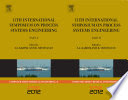
Affiliations: State Key Laboratory of Industrial Control Technology, Institute of Industrial Control, Zhejiang University and Department of Mechanical and Industrial Engineering, University of Illinois at Chicago
Journal: Computer Aided Chemical Engineering, vol. 31, pp. 290-294, 11th International Symposium on Process Systems Engineering, 15-19 July 2012, Singapore, by Elsevier, Amsterdam, Oxford; 2012; Eds. I.A. Karimi and Rajagopalan Srinivasan,
Abstract
A computer-aided process engineering (CAPE)-OPEN-based open-architecture application was implemented for the online Purified Terephthalic Acid (PTA) process monitoring and optimization. The framework incorporates independent Process Modeling Components (PMC) that comply with the CAPE-OPEN 1.0 standard: p- xylene (PX) oxidation unit operation model, the nonlinear algebraic/nonlinear programming (NLA/NLP) interior point optimizer (IPOPT) solver, as well as the physical properties and the equilibrium calculation engine. All components are seamlessly integrated into the Process Modeling Environment (PME) for process simulation and optimization. The key reaction kinetic constants were estimated using a sequential subproblem strategy and then encapsulated through an ICapeUnit interface, with the selective operational parameters exposed for the operation and maintenance requirements. The reactor model can be solved by IPOPT within less than a second through the ICapeMINLP interface using an ordinary desktop computer. The convergence reliability in successfully solving the model for a wide-range of operation conditions was subsequently investigated. Based on the developed CAPE-OPEN model, a de-facto ” Soft-sensing and Optimization System for p-xylene (PX) and acetic acid (HAC) Consumption in the PTA Process” was implemented and successfully used at the Sinopec Yangzi Petrochemical Company in Nanjing, China. The system provides real-time consumption calculation, product quality prediction, and operational guidance for operators. The CAPE-OPEN conceptual design can be applied in industrial settings for real-time applications.
